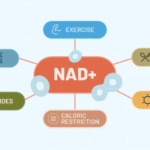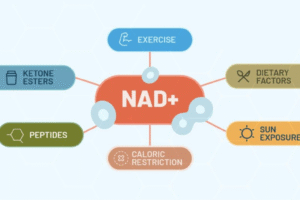1. Introduction to Anterior Infarct
Anterior infarct refers to damage to the front wall of the heart, typically caused by impaired blood flow to the left anterior descending artery. Identifying ECG changes associated with an anterior infarct of undetermined age is crucial for accurate diagnosis and treatment.
2. Undetermined Age
When the age of an anterior infarct cannot be precisely determined based on clinical assessment or diagnostic tests, it poses challenges in evaluating the extent of myocardial damage and planning appropriate interventions.
3. Importance of ECG Evaluation
The electrocardiogram (ECG) is a fundamental tool used to assess cardiac function and detect abnormalities. Understanding ECG changes indicative of an anterior infarct with undetermined age is essential for timely and effective management.
4. Recognizing ECG Abnormalities
Abnormal ECG findings associated with an anterior infarct include ST-segment elevation, pathological Q waves, T-wave inversion, and arrhythmias. These changes may signify myocardial ischemia, injury, or infarction in the anterior wall of the heart.
5. ST-Segment Elevation
ST-segment elevation in the precordial leads (V1-V6) is a hallmark of acute myocardial infarction involving the anterior wall. The magnitude and morphology of ST-segment elevation provide valuable diagnostic information and guide treatment decisions.
6. Pathological Q Waves
Pathological Q waves in the precordial leads are indicative of transmural myocardial infarction and suggest irreversible damage to the anterior wall of the heart. The presence of Q waves helps differentiate acute infarction from chronic changes.
7. T-Wave Inversion
T-wave inversion in the precordial leads may occur in the setting of acute myocardial ischemia or infarction involving the anterior wall. However, T-wave inversion alone may not reliably distinguish between acute and chronic events.
8. Arrhythmias
Arrhythmias such as ventricular ectopy, atrial fibrillation, or conduction disturbances may accompany an anterior infarct with undetermined age, complicating the interpretation of ECG findings and influencing treatment strategies.
9. Differential Diagnosis
Distinguishing between acute, subacute, and chronic myocardial infarction based solely on ECG findings can be challenging, underscoring the importance of clinical correlation and additional diagnostic modalities.
10. Serial ECG Monitoring
Serial ECG monitoring allows healthcare providers to assess changes in ECG patterns over time, providing insights into the evolution of myocardial injury and guiding therapeutic interventions in patients with an anterior infarct of undetermined age.
11. Cardiac Biomarkers
Measurement of cardiac biomarkers such as troponin and creatine kinase-MB (CK-MB) levels aids in confirming the diagnosis of myocardial infarction and assessing the extent of myocardial damage, complementing ECG findings in cases of undetermined age.
12. Imaging Studies
Imaging modalities such as echocardiography, cardiac magnetic resonance imaging (MRI), or nuclear myocardial perfusion scans may help characterize myocardial function and identify ischemic or infarcted areas in patients with an anterior infarct of undetermined age.
13. Risk Stratification
Risk stratification based on clinical presentation, ECG findings, cardiac biomarkers, and imaging studies assists in predicting the likelihood of adverse cardiac events and guiding the selection of appropriate treatment strategies.
14. Medical Management
Medical management of an anterior infarct with undetermined age focuses on symptom relief, prevention of complications, and optimization of cardiac function through the use of medications such as antiplatelets, beta-blockers, ACE inhibitors, and statins.
15. Reperfusion Therapy
In cases of suspected acute myocardial infarction, prompt reperfusion therapy with percutaneous coronary intervention (PCI) or thrombolytic therapy may be indicated to restore coronary blood flow and minimize myocardial damage.
16. Coronary Angiography
Coronary angiography is essential for evaluating coronary artery anatomy, identifying culprit lesions, and guiding revascularization strategies in patients with an anterior infarct of undetermined age.
17. Cardiac Rehabilitation
Cardiac rehabilitation programs play a vital role in the comprehensive care of patients recovering from myocardial infarction, providing structured exercise training, lifestyle modification, and psychosocial support to improve outcomes and quality of life.
18. Long-Term Follow-Up
Long-term follow-up is necessary for patients with an anterior infarct of undetermined age to monitor cardiac function, assess treatment efficacy, and manage risk factors for recurrent cardiovascular events.
19. Shared Decision-Making
Shared decision-making between patients and healthcare providers facilitates informed choices regarding treatment options, lifestyle modifications, and ongoing management of cardiovascular risk factors.
20. Education and Support
Patient education and support programs empower individuals to actively participate in their cardiac care, adhere to prescribed medications and lifestyle recommendations, and recognize and respond to warning signs of recurrent cardiac events.
21. Research and Innovation
Ongoing research in cardiovascular medicine and technology drives innovation in the diagnosis, treatment, and prevention of myocardial infarction, offering new insights and therapeutic options for patients with an anterior infarct of undetermined age.
22. Quality Improvement Initiatives
Quality improvement initiatives focus on optimizing the delivery of cardiovascular care, reducing treatment disparities, and implementing evidence-based guidelines to improve outcomes and patient satisfaction.
23. Advocacy Efforts
Advocacy efforts aimed at raising awareness about cardiovascular health, promoting early detection and treatment of myocardial infarction, and advocating for policies that support cardiovascular research and education contribute to improved public health outcomes.
24. Multidisciplinary Collaboration
Multidisciplinary collaboration among healthcare providers, including cardiologists, emergency physicians, nurses, pharmacists, and rehabilitation specialists, ensures comprehensive and coordinated care for patients with an anterior infarct of undetermined age.
25. Conclusion
An abnormal ECG in the setting of an anterior infarct with undetermined age poses diagnostic and management challenges, requiring a comprehensive approach that integrates clinical assessment, diagnostic testing, risk stratification, and evidence-based treatment strategies to optimize patient outcomes and quality of life.














